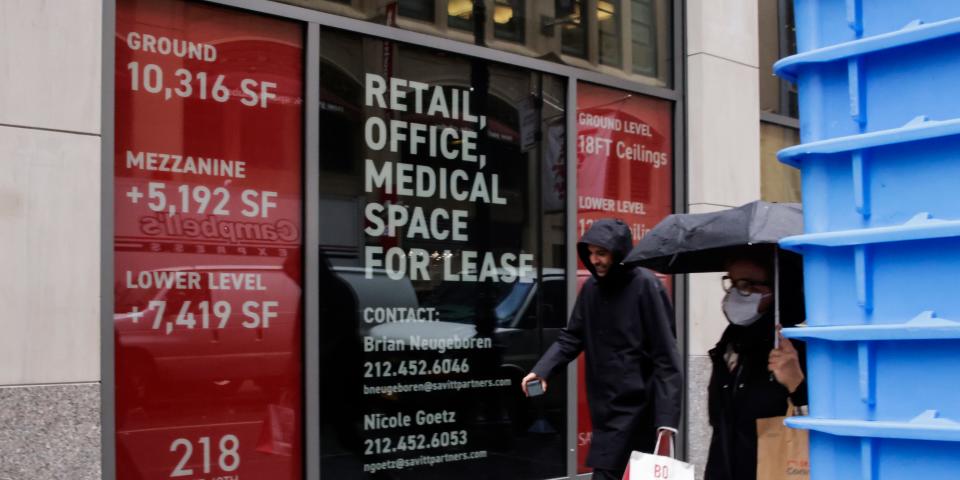Troubled commercial real estate loans outstrip reserves at top US banks

Reserves held by big banks as a buffer against loan losses dipped below the amount of delinquent commercial real estate debt, per the FT.
Late payments on commercial mortgages have jumped in the past year.
Commercial real estate loans at least 30 days delinquent soared to $9.3 billion among the top banks last year.
The volume of commercial mortgages at least 30 days late on payment soared past total reserves held by the largest US banks last year.
Citing data from the Federal Deposit Insurance Corporation, The Financial Times reported that major banks, including Bank of America, JPMorgan Chase, Citigroup, Goldman Sachs, Morgan Stanley, and Wells Fargo have seen average reserves drop from $1.60 to $0.90 for each dollar of commercial mortgage debt at least 30 days delinquent.
The amount of delinquent commercial property debt held by the top banks nearly tripled in 2023 to $9.3 billion, the FT said. For the overall banking sector, delinquencies on loans backed by offices, malls, apartments, and other commercial properties more than doubled last year to $24.3 billion from $11.2 billion.
Commercial property jitters have spread throughout markets over the last year, with more than $900 billion, or over 20% of the total debt owed on US commercial and multi-family real estate, set to mature this year. Billionaire real estate investor Barry Sternlicht recently predicted $1 trillion of losses on office properties alone.
Banks' exposure to the turmoil in the sector has been a focus since the fall of several regional banks in March last year, and were brought to the surface again in recent weeks as investors fled New York Community Bank stock following a disappointing earnings update. A rout in the stock price was driven in part by worries over the bank's holdings of commercial mortgage debt.
Meanwhile, the Federal Reserve has pushed back on rate-cut timelines this year following a string of hot economic data, keeping pressure on the commercial property market as landlords are faced with refinancing maturing debt at higher interest rates.
Michael Barr, the head of bank supervision at the Fed said last week that the decreased demand for office space and higher interest rates have put pressure on commercial property valuations, particularly in the office sector. The central bank has been focusing on banks' commercial mortgage lending, monitoring whether they have appropriate provisions in place and sufficient capital to buffer against potential future loan losses.
Read the original article on Business Insider
